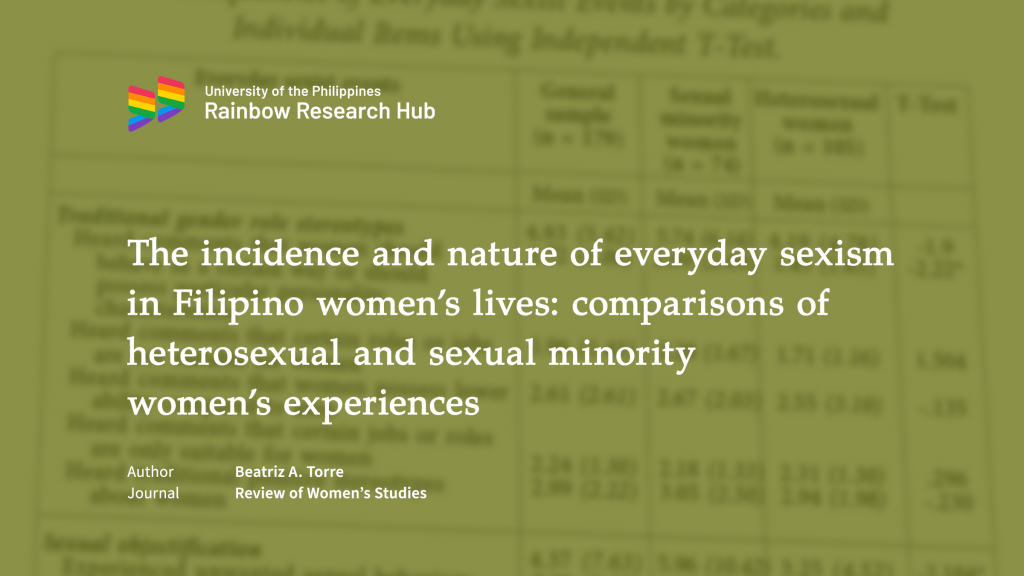
Essence
In this article, Bea investigated potential differences in the incidence and nature of everyday sexism in the lives of heterosexual and sexual minority Filipino women. Examples of everyday sexist events include comments on gender stereotypes, jokes about women or girls related to their gender, and ogling.
The current study compares the experiences of everyday sexism of heterosexual women and sexual minority women using an online survey questionnaire with both quantitative and qualitative data analyses.
Author: Beatriz A. Torre
Journal: Review of Women’s Studies
Citation: Torre, B. A. (2021). The incidence and nature of everyday sexism in Filipino women’s lives: Comparisons of heterosexual and sexual minority women’s experiences. Review of Women’s Studies, 31(1), 63–100.
Explore
Express
- What was the study’s objective?
- What research question/s did the study aim to answer?
- The study used the following theories and approaches (enumerated below). Explain each briefly and how they were used in the study:
- Ambivalent sexism theory
- Intersectionality theory
- Intercategorical approach (to intersectionality research)
- What was/were the study’s data collection method/s?
- What was/were the study’s data analysis method/s?
- What are the study’s design/methodological strengths?
- What are the study’s design/methodological weaknesses or points of improvement?
Engage
[Individual/group activity]
Answer the following questions:
- The study’s researcher collected data using an online survey. Why do you think they did so, despite the limitations of online ways of dissemination?
- The researcher flags that the study is not representative of the experiences of all Filipino women and identifies groups that other researchers could focus on (enumerated below). If you were to propose a study on the same topic—on experiences of everyday sexism—how would you recruit participants from these groups? What sampling and data collection methods would you use? Would you still use a mixed-methods design, or the same approach as the current study’s?
- Older women (40 years old and above)
- Women with lower educational attainment
- Women from minority religious groups
[Group activity]
Choose one of the sexual and gender minority subgroups enumerated below and construct a short survey (less than 20 items) on the corresponding topic. The survey can be a questionnaire or an interview guide based on already existing literature and measures (similar to the one used in the current study) on the topic, and the items can be close-ended, open-ended, or both. If working on an interview guide, it can be structured or semi-structured.
- Lesbian women and everyday heterosexism
- Gay men and everyday heterosexism
- Transgender people and everyday cisgenderism
- Bisexual people and everyday monosexism
